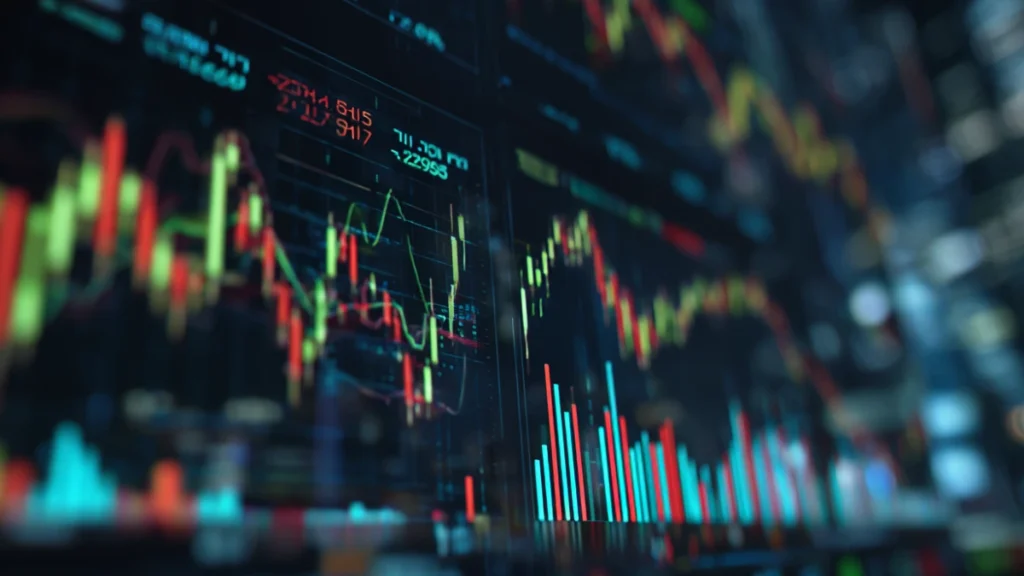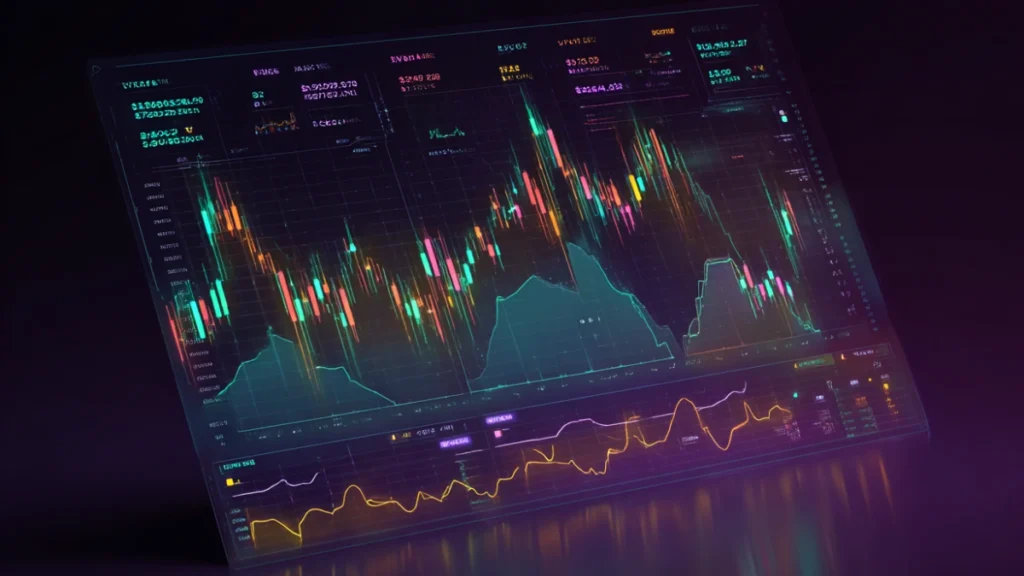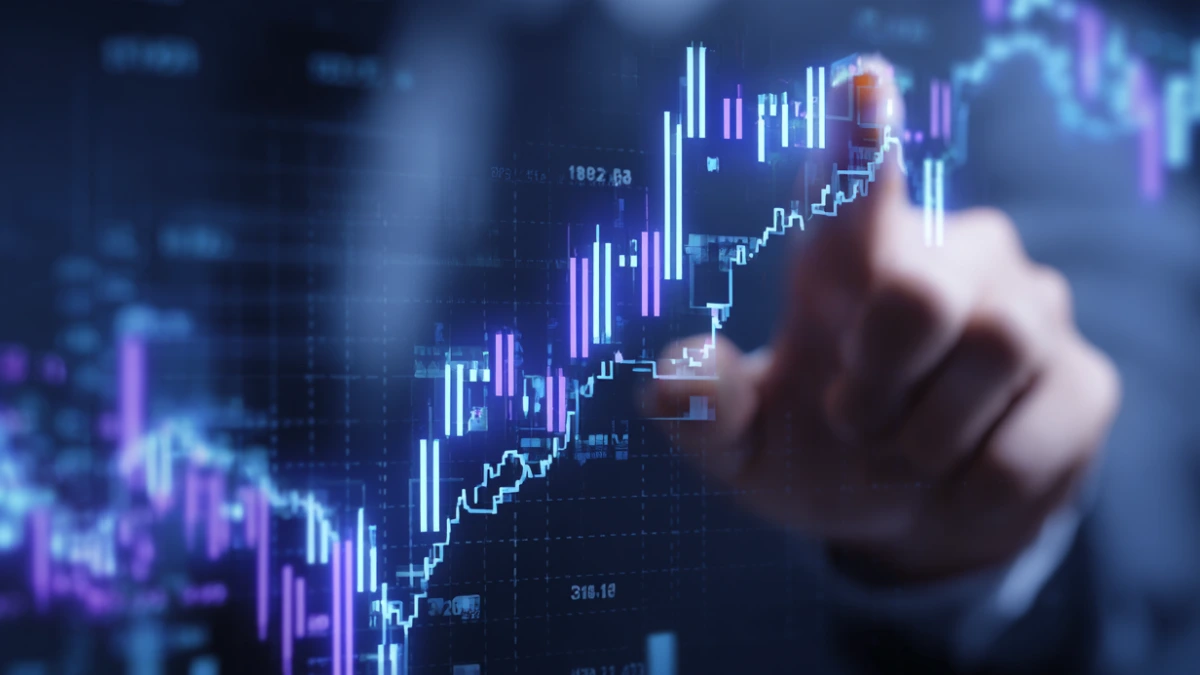Table of Contents
Introduction
Forex trading — short for foreign exchange — is the largest financial market in the world, with over $7 trillion traded daily. Yet for most beginners, it still feels like a mystery: charts moving 24/5, strange abbreviations like “EUR/USD,” and platforms filled with confusing terms.
But the truth is, forex trading is simple — once you understand the core concepts. And with the rise of prop firms, low-capital brokers, and mobile trading apps, it’s never been easier to get started.
In this beginner’s guide, you’ll learn what forex trading really is, how the market works, how to read currency pairs, and the steps you need to take to open your first trade confidently in 2025 — even with a small account.
Let’s break it all down, step by step.
🌍 What Is Forex Trading (And How Does It Work)?
Forex trading — also known as foreign exchange or FX trading — is the act of buying one currency while simultaneously selling another. These currencies are always traded in pairs, like EUR/USD (Euro vs US Dollar) or GBP/JPY (British Pound vs Japanese Yen).
When you trade forex, you’re speculating on whether one currency will rise or fall in value compared to another.
✅ Real-life example:
If you believe the euro will strengthen against the dollar, you might buy EUR/USD. If you’re right and the price goes up, you profit. If it goes down, you lose — just like any other market.
💱 Why Do Currencies Fluctuate?
Currencies move based on supply and demand, driven by:
• Economic news (like inflation, interest rates, or unemployment)
• Central bank decisions
• Global events (like elections, wars, or market crashes)
• Market sentiment (fear, greed, risk appetite)
Because the forex market is open 24 hours a day (Monday to Friday), these price movements can happen at any time — making it highly liquid and full of opportunity.
🔁 What Makes Forex Different From Stocks or Crypto?
• Always traded in pairs (you’re comparing two economies)
• No central exchange — it’s decentralized and runs globally
• High liquidity & leverage — easy to enter/exit trades quickly
• Open 24/5 — markets run around the clock during the week
In short: you’re trading the strength of one economy against another. And once you understand how pairs move, forex becomes one of the cleanest and most technical markets you can trade.

💱 Understanding Currency Pairs — Majors, Minors, and Exotics
In forex, currencies are always traded in pairs — and not all pairs are created equal. Some are stable and highly liquid, while others are volatile and harder to trade. Knowing the difference helps you choose the right pairs for your strategy and experience level.
🔹 Major Pairs (Best for Beginners)
These are the most traded pairs in the world. They involve the US Dollar (USD) on one side and have tight spreads and high liquidity.
Examples:
• EUR/USD (Euro / US Dollar)
• GBP/USD (British Pound / US Dollar)
• USD/JPY (US Dollar / Japanese Yen)
• USD/CHF (US Dollar / Swiss Franc)
• AUD/USD (Australian Dollar / US Dollar)
• NZD/USD (New Zealand Dollar / US Dollar)
Why trade majors?
• Lower trading costs (tight spreads)
• Lots of educational content
• Respond well to technical analysis
🔸 Minor Pairs (Crosses)
These are pairs that don’t include the US Dollar but involve other strong currencies.
Examples:
• EUR/GBP
• GBP/JPY
• AUD/NZD
• EUR/CHF
Why trade minors?
• Good volatility for experienced traders
• Sometimes form strong trends
• Slightly wider spreads than majors
⚠️ Exotic Pairs (High Risk)
These include one major currency and one from a smaller or emerging economy.
Examples:
• USD/TRY (US Dollar / Turkish Lira)
• EUR/SEK (Euro / Swedish Krona)
• USD/ZAR (US Dollar / South African Rand)
Why avoid them as a beginner?
• Very high spreads and slippage
• Low liquidity
• Sensitive to political instability and global risk sentiment
As a new trader, it’s smart to stick to major pairs. They’re easier to learn, cheaper to trade, and offer more predictable movement — especially during high-volume sessions like London and New York.
🔎 How to Read a Forex Quote (And What It Really Means)
Forex quotes might look confusing at first, but once you understand the structure, they’re actually very simple. Every quote involves two currencies: the base currency and the quote currency.
🧠 Example Quote: EUR/USD = 1.1050
• EUR = Base currency
• USD = Quote currency
• 1.1050 = This means 1 euro is worth 1.1050 US dollars
So if you buy EUR/USD, you’re buying euros and selling dollars. If you sell EUR/USD, you’re selling euros and buying dollars.
🔄 Bid vs Ask Price:
You’ll usually see two prices when trading:
• Bid = The price you can sell at
• Ask = The price you can buy at
• The difference between them is called the spread (your trading cost)
Example:
• EUR/USD = 1.1050 / 1.1052
• Spread = 0.0002 (or 2 pips)
📊 What Makes Price Move?
The forex price moves when:
• Traders are buying more of the base currency
• News or economic data increases/decreases demand
• Global events shift investor sentiment
If more people buy EUR, EUR/USD goes up.
If more people buy USD, EUR/USD goes down.
Understanding quotes helps you make smart decisions and avoid costly mistakes — like entering a trade in the wrong direction.

🚀 How to Start Trading Forex in 2025 (Step-by-Step)
Getting started with forex trading is easier than ever — but you still need a clear plan to avoid the common mistakes beginners make. Here’s a simple step-by-step path to enter the market with confidence:
✅ Step 1: Learn the Basics
Before you risk money, make sure you understand:
• How forex pairs work
• What moves the market (news, sessions, volume)
• Risk management and position sizing
• How to use a demo account
Even watching charts for a week or two will help you build confidence.
✅ Step 2: Choose a Reputable Broker
Look for:
• Regulation (FCA, ASIC, CFTC, etc.)
• Low spreads and fees
• Fast execution & solid platform (like MT4/MT5)
• Demo account to practice risk-free
Some popular brokers for beginners in 2025:
• Pepperstone
• IC Markets
• OANDA
• FTMO (if trading via a prop firm)
✅ Step 3: Pick a Trading Platform
Most brokers use MetaTrader 4 (MT4) or MetaTrader 5 (MT5). These platforms allow you to:
• Analyze charts
• Set stop-loss and take-profit
• Use indicators and trading bots
• Execute trades in real-time
Other options include TradingView (for analysis) and proprietary mobile apps.
✅ Step 4: Use a Demo Account First
Practice trading without real money until you:
• Understand how to place trades
• Can follow a simple risk management plan
• Feel confident using your chosen platform
Aim for at least 30–50 demo trades before going live.
✅ Step 5: Go Live With a Small Account (Or Funded Account)
Start small — even $100–$500 is enough to begin learning with real emotions involved.
Alternatively, you can apply to a prop firm challenge (like MyForexFunds or FTMO) if you already have a strategy and discipline.
💡 Tips for Beginner Forex Traders to Stay Consistent in 2025
Trading forex successfully isn’t just about knowing when to buy or sell — it’s about building discipline, following a plan, and avoiding emotional decisions. Here are some key tips to help you stay consistent and focused as a new trader:
🧠 1. Master One or Two Pairs
Don’t try to trade everything. Start with 1–2 major pairs (like EUR/USD or GBP/USD) and learn how they behave during different sessions.
📆 2. Stick to a Daily Routine
Pick a specific time of day to trade and stick to it. Most beginners do best during the London or New York sessions when the market is most active.
📏 3. Always Use a Stop-Loss
Never enter a trade without knowing exactly how much you’re willing to lose. A stop-loss protects your capital and your mindset.
🗒️ 4. Keep a Trading Journal
Write down every trade: your reason for entry, your emotions, and the outcome. Over time, your journal will reveal your strengths and weaknesses.
🚫 5. Avoid Overtrading
Don’t chase the market. One or two good trades per day are more than enough. Quality always beats quantity.
🧘 6. Stay Calm After Wins or Losses
Don’t get too high after a win or too low after a loss. Emotional swings lead to poor decisions. Stick to your plan no matter what.
📚 7. Keep Learning
Read books, watch quality YouTube channels, and follow experienced traders who focus on education — not hype.
Forex trading isn’t a get-rich-quick game. It’s a skill — and like any skill, it takes time, effort, and repetition to master.
🎯 Final Thoughts — Forex Is Simple, But You Must Respect the Process
Forex trading can feel overwhelming in the beginning — charts moving fast, strange terms like pips and lots, constant noise from influencers promising quick profits. But the truth is: forex is simple when you respect the process.
You don’t need to trade a hundred pairs.
You don’t need to win every trade.
You don’t even need a complex strategy.
Forex trading can seem intimidating at first — global currencies moving 24 hours a day, endless charts and indicators, and complex jargon that overwhelms most beginners. But once you break it down into simple, actionable parts, forex becomes one of the most accessible and transparent financial markets in the world. The key to success? Start with clarity, build a strong foundation, and stay consistent. In 2025, retail traders have more tools than ever before — from mobile apps to prop firm challenges — to begin trading with low capital and high potential. But with opportunity comes responsibility.
One of the most critical steps is choosing a regulated broker. Make sure your platform is licensed by bodies like the FCA, ASIC, or CFTC, and offers low spreads, fast execution, and access to major currency pairs. You can compare trusted brokers at ForexBrokers.com to find the best match for your region and budget.
Another powerful advantage in forex is mastering your routine. The best traders often specialize in just one or two currency pairs — such as EUR/USD or GBP/JPY — and build deep familiarity with how they behave during different trading sessions (London, New York, etc.). This focused approach leads to more consistent execution, better emotional control, and fewer impulse trades. Whether you’re trading part-time or full-time, your ability to stay disciplined will determine your long-term results. One key habit that helps build this discipline is journaling. In fact, a detailed trading journal is one of the most underrated tools a beginner can use. By tracking your entries, exits, mistakes, and emotions, you’ll gain insights no indicator can give you.
Many new traders also ask whether they should use demo accounts or jump into live trading. The answer? Start with demo until you’re confident placing trades and managing risk. But don’t stay in demo mode forever — live trading with even a small account teaches you about emotions and real pressure, which is essential to grow. Once you gain some consistency, consider joining a prop firm like FTMO or MyForexFunds to trade larger capital without risking your own. Remember, success in forex isn’t about predicting every move — it’s about managing risk, reacting smartly, and improving trade by trade. Stick to high-volume pairs, avoid exotic currencies until you gain experience, and always protect your capital with stop-losses and proper lot sizing.
What you do need is patience, discipline, and a clear foundation. Learn the basics. Pick one or two currency pairs. Trade at the right time. Protect your capital with smart risk management. Journal your trades. Improve one step at a time.
The traders who succeed in forex aren’t the ones who chase shortcuts — they’re the ones who treat it like a profession, not a lottery ticket.
So if you’re ready to start your journey, take it slow, stay focused, and remember:
Consistency beats intensity — every time.
In the end, forex trading isn’t a shortcut to wealth — it’s a long game built on strategy, psychology, and constant learning. Respect the market, stay humble, and trade with purpose.

